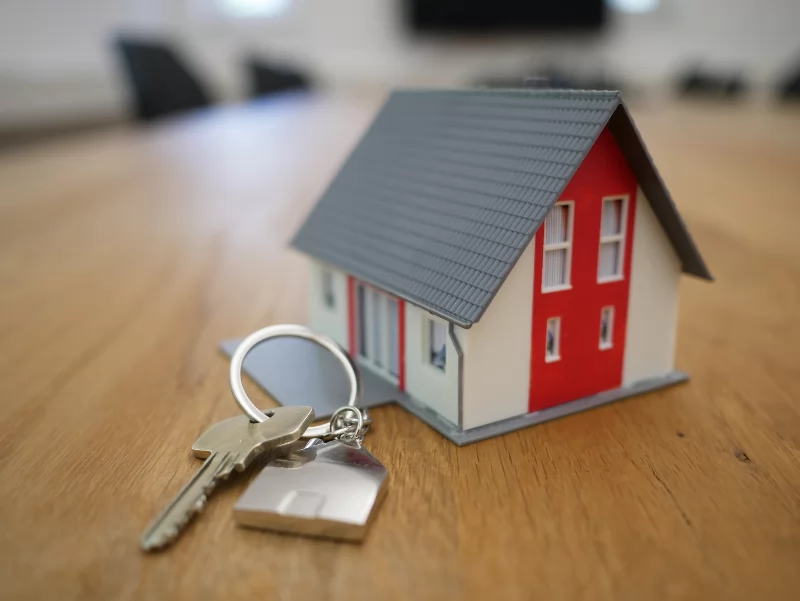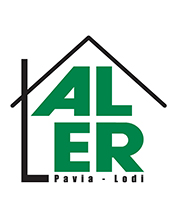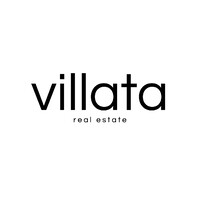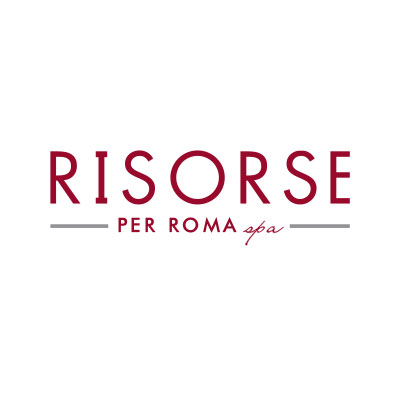Sintesi
Since 2020, the global real estate market has experienced various shifts due to the impact of the COVID-19 pandemic. In Italy, the pandemic led to a decline in market growth, with a notable slowdown in homeowner turnover and foreign investment dropping from 69% to 59%. Despite this, the warehouse segment flourished while office construction demand decreased. Globally, the real estate sector began recovering with a predicted compound annual growth rate (CAGR) of 4.8% from 2021 to 2030. Factors fueling this growth include rising demand for industrial and commercial infrastructure and public investment in infrastructure development. The global housing market, valued at $9.5 billion in 2021, is expected to reach $14.6 billion by 2030.
Urbanization, changing consumer preferences for secure environments, technological integration, and government initiatives are other significant contributors to market expansion. Italian real estate, accounting for 20.9% of the country's GDP in 2021, witnessed a positive trend in real estate funds, expecting an end-of-year estimate of 601 investment vehicles and net assets of 102 billion euros. Offices held a dominant share of 58.5% in managed real estate businesses. The pandemic's impact resulted in a halt in transactions during early 2020 but saw a gradual market revival without a drop in housing sale prices. Expectations for post-pandemic recovery are high, with a resurgence in real estate development activities and development expansions in various sectors, including constructions related to food trade chains.
Trends and Analysis of Market Demand in the Italian Real Estate Sector
Within the Italian real estate sector, there has been a noticeable trend towards the multifunctionality of homes, driven largely by the effects of the COVID-19 pandemic. Italian families, affected by the pandemic and the uncertainty it has brought, have started to see their homes as more than just a residence; they have become centers of work, education, and recreation, leading to a change in what they demand from their living spaces. There has been a surge in the perceived importance of housing throughout the country, with real estate activities contributing to approximately one-fifth of Italy's GDP. The market has shown a particular interest in energy efficiency, outdoor space, and technological installations for improved connectivity. Developments that cater to these demands, providing not just a place of residence but an enriched living experience, are being sought after by about 40 percent of households seeking new properties, while around 32 percent are looking for properties with a private garden or outdoor space. In contrast to residential demands, the non-residential market has faced shifts as well.
The office sector has seen a change in demand due to the rise in remote working, resulting in mixed signals regarding volumes bought and sold. Nevertheless, the highest number of units bought and sold in the past decade was registered in 2021, indicating a strong market recovery with variations across different regions. The retail market hasn't been static either, having observed consistent growth in real estate transactions related to stores and workshops. There's a stronghold with over 2.5 million units recorded in commercial categories, though there has been a small decline. In the field of productive real estate linked to manufacturing, growth has recovered significantly in 2021 after a slowdown in previous years, with the market seeing the highest number of purchases and sales. The estimated exchange value for non-residential units amounts to between €15 and 20 billion, showcasing the sector's valuable contribution to the market. Lastly, the distribution channels linked to real estate brokerage have experienced a stable trend in the number of enterprises engaged in this activity, although the specifics were truncated from the text provided. It can be deduced that this channel plays a critical role in connecting sellers, developers, and buyers within the Italian real estate market.
Key Players in the Italian Real Estate Development and Construction Sectors
The Italian real estate development market is a complex ecosystem consisting of multiple influential actors that shape its landscape and drive growth. While the aforementioned text does not list specific companies, it categorizes the main entities involved as per the breadth of their activities, signifying their unique contributions and potential impact on the sector's dynamics.
Real Estate Project Development Enterprises:
- These are the entities primarily responsible for initiating real estate projects. They oversee the entirety of development activities – from land acquisition and conceptual design to securing the necessary permits and arranging for construction. The growth of this segment is marked by an increased number of enterprises reflecting an overall positive business sentiment. It represents the visionaries of the real estate world, setting the stage for residential and corporate structures of the future. With around 3,345 entities reported in 2021, this sector signals robust growth potential despite a brief hitch in the otherwise upward trajectory in 2020.
- Construction Companies: Residential and non-residential builders are the entities that convert blueprints into tangible structures. They are the backbone of the real estate sector, providing the labor, expertise, and materials necessary to bring developers' visions to fruition. Although there was a decline in the number of these enterprises from 2015 to 2020, a reversal in trend was observed in 2021, indicating a resurgence in the construction activity post a period of stagnation. With a majority structured as limited liability companies, this segment showcases resilience and adaptability in the face of market fluctuations.
- Real Estate Brokerage Firms: Leveraging ATECO code 68.31, real estate brokerage firms are the intermediaries facilitating transactions between buyers, sellers, and renters. Their expertise lies in matching demand with supply, offering advisory services, and ensuring smooth transactional flow within the market.
This critical segment aids in the liquidity of real estate assets and assists in price discovery, thereby playing an integral role in the overall market efficiency. In a broader sense, these categories of enterprises provide a skeleton view of the real estate development market structure in Italy. Each category represents key stages within the real estate life cycle: conceptualization, creation, and commerce. Together, they underscore Italy's position as a market with diversified growth opportunities and emphasize the significance of sector-wide collaboration in achieving sustained economic contributions from real estate endeavors.
per comprendere questo mercato
Dettaglio del contenuto
 Informazioni
Informazioni
- Pagine : 30 pags
- Formato : Versione PDF e digitale
- Ultimo aggiornamento : 12/07/2023
 Riepilogo ed estratti
Riepilogo ed estratti
1 Market Overview
1.1 Definition and scope of the study
Real estate development activities consist of designing, building and selling real estate. This activity must be distinguished from land development activity, which develops vacant land. Thus, real estate development includes all means and actions implemented to acquire land, construct a building, and finally have it acquired by a client.
The real estate development market can be segmented into:
- Properties intended for housing (condominium, single-family home, etc.).
- Properties intended for business (offices, restaurants, stores, warehouses, factories, hotels, etc.)
- Recreational and/or public properties (gyms, swimming pools, stadiums, hospitals, city halls, etc.)
In Italy, the pandemic has caused a slowdown in market growth.
Developer turnover (by volume) is mainly measured by owner-occupied housing and investment. However, developer turnover depends on several factors, including private and public sector demand, the level of government subsidies, the loan rate granted, or the financial situation of households for private home purchases.
Recently, the warehouse segment is booming as demand for office construction is showing lower rates.
In terms of sales in 2020, investment volume decreased by 29 percent from the previous year. Foreign investment also dropped from 69% to 59% of the total.
 Grafica
Grafica
- Dimensione del mercato immobiliare globale nel 2021, con previsioni dal 2022 al 2030
- Il peso sul Pil dei servizi immobiliari in Europa
- Evoluzione del numero dei fondi immobiliari in Italia
- I businesses immobiliari gestiti dai fondi in Italia
- Erogazioni di mutui alle famiglie per l’acquisto di abitazioni e previsioni 2023-2024
Tutti i nostri studi sono disponibili online e in PDF
Ti invitiamo a consultare un esempio del nostro lavoro di studio su altri mercato!
Aziende citate in questo studio
Questo studio contiene un panorama completo di società di mercato con le ultime cifre e le notizie di ogni azienda :
 Perché Scegliere Questo Studio :
Perché Scegliere Questo Studio :
Accedi a più di 35 ore di lavoro
I nostri studi sono il risultato di oltre 35 ore di ricerca e analisi. L'uso dei nostri studi ti consente di dedicare più tempo e aggiungere valore ai tuoi progetti.
Approfitta di 6 anni di esperienza e oltre 1.500 studi settoriali già prodotti
La nostra competenza ci consente di produrre studi completi in tutti i settori, inclusi i mercati di nicchia o emergenti.
Il nostro know-how e la nostra metodologia ci consentono di produrre studi con un valore unico di denaro
Accedi a diverse migliaia di articoli e dati a pagamento
BusinessCoot ha accesso all'intera stampa economica a pagamento e ai database esclusivi per svolgere studi di mercato (+ 30.000 articoli privati e fonti).
Al fine di arricchire i nostri studi, i nostri analisti utilizzano anche indicatori Web (semrush, tendenze, ecc.) Per identificare le tendenze in un mercato e strategie aziendali. (Consulta le nostre fonti a pagamento)
Supporto garantito dopo l'acquisto
Una squadra dedicata al servizio post-vendita, per garantirti un alto livello di soddisfazione. +39 380 247 7810
Un formato digitale progettato per i nostri utenti
Accedi a un PDF ma anche una versione digitale per i nostri clienti. Questa versione consente di accedere a fonti, dati in formato Excel e grafica. Il contenuto dello studio può quindi essere facilmente recuperato e adattato per i tuoi supporti.
 Le nostre offerte :
Le nostre offerte :
the real estate development market | Italy
- Quali sono i dati relativi alle dimensioni e alla crescita del mercato?
- Cosa sta influenzando l'andamento e l'evoluzione del mercato?
- Qual'è il posizionamento degli attori di mercato?
- Segmentazione e profilo delle aziende operanti nel mercato
- Dati e numeri da una molteplicità di fonti
Pacchetto di 5 studi (-15%) IT Italy
- 5 rapporti a 75,6 € IVA esclusa per studio da scegliere dal nostro catalogo italiano per 12 mesi
- Risparmiare il 15% sugli studi aggiuntivi acquistati
- Scegliere il rimborso del credito non utilizzato al termine dei 12 mesi (durata del pacchetto).
Consulta i termini e le condizioni del pack e del rimborso del credito non utilizzato.























